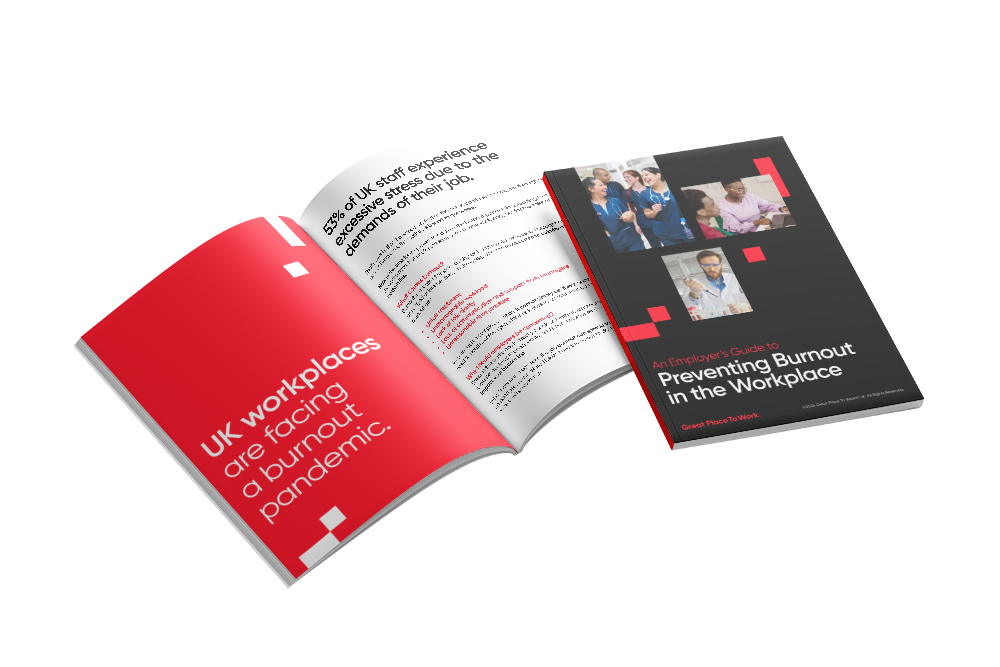"The most important thing we can all strive for is an ongoing awareness of our own thoughts and feelings, and any behavioural changes in others, while keeping the lines of communication open." - Sara Silvonen, Wellbeing Consultant
National Stress Awareness Month has been held in the UK each April since 1992. In 2019, during every week of the 28th Stress Awareness Month, Great Place to Work UK will highlight different perspectives around the work issue that affects us all from time to time.
Week 1: What does stress look and feel like?
An unexpected WhatsApp message from your manager in the middle of a family dinner. 56 new unread emails returning from your 30-minute lunch break. 80% of today’s urgent to-do list still pending at 5:30pm. Such moments are usually accompanied by sensations of a tightening stomach, quickened heartbeat and racing thoughts – ultimately dawning on the realisation ‘I can’t cope’.
At least one of these scenarios will sound familiar to most of us. In an environment of heightened competition, austerity and uncertainty, rising stress levels plague ever more of our working population. Technology doesn’t always help – in our 24/7 ‘always-on’ society, the knowledge worker finds themselves in a situation where it is increasingly difficult, even impossible, to ‘escape’ work. The surge of agile and flexible working practices has also arguably not always been conducive to mental wellbeing, with the blurring of boundaries between personal time and space.
With these contextual changes in the way we work providing breeding ground for stress, and potentially burnout, a nuanced understanding of its manifestation is vital.
And knowing what stress and burnout looks like begins with asking ourselves: how do I think and feel when stressed?
In terms of warning signs to look out for – both in ourselves and those around us - there’s really no one tell-tale sign of a person feeling overwhelmed. For some, it may manifest as irritability, apathy, loss of interest in work, noticeable fatigue, social withdrawal or other uncharacteristic behaviours. As the experience of distress is always unique to the individual, its internal and external manifestation can occur in countless ways. It can be ‘silent’ both to the employee, who may be oblivious to the long-term health risks of chronic stress, or to the employer, blind to the everyday struggle of an employee reluctant to show weakness.

Any single one of these possible symptoms does not of course point to a stress issue. When persistent and/or combined however, they may be indicative of a problem requiring intervention. The most important thing we can all strive for is an ongoing awareness of our own thoughts and feelings, and any behavioural changes in others, while keeping the lines of communication open.
So we know how stress might make us think, feel and behave. But what exactly do we actually mean when we talk about a stress issue? Next week we’ll look at unpacking the concept of stress.
Our bespoke wellbeing workshop will provide your organisation's line managers, senior leadership and/or HR leaders an opportunity to learn practical tips and takeaways, enabling them to measure wellbeing and build a wellbeing strategy. Get in touch today to learn more.
Sara Silvonen is a Consultant and Wellbeing Specialist at Great Place to Work UK. With an academic background in organisational psychiatry and psychology, she is particularly interested in supporting organisations in understanding the value of wellbeing-based interventions. She is passionate about mental health, having volunteered extensively in the field, and about promoting this agenda in the workplace.








